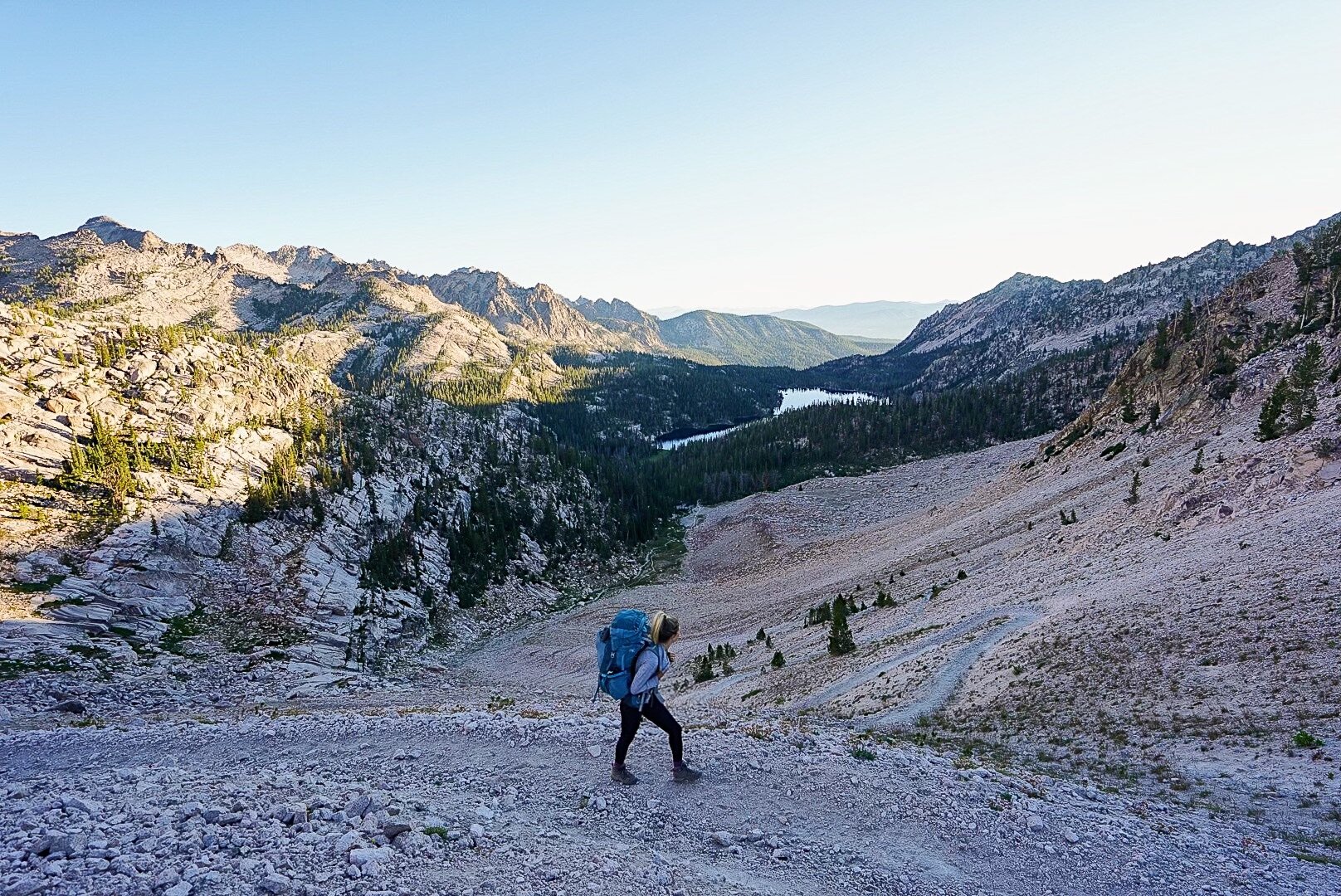How to Backpack on a Budget
It is no secret that backpacking can be really expensive. The cost of gear adds up quickly, especially when you are first starting out. More expensive gear is typically lighter weight, more compact and higher quality but it is not necessary to invest all at once or spend a fortune to get into backpacking. The most important part is getting out there, however you can make it work.
Here are our tips on how to backpack on a budget:
Repurpose Car Camping Gear
If you own car camping gear, many items can be repurposed for a backpacking trip (tent, sleeping bag, pad, cookware, dishware, etc). Don’t sweat the extra few ounces or pounds on your first few trips into the backcountry - this is a great way to determine whether you enjoy backpacking and are committed to more trips before before investing in the gear. The Somewhere Outside team carried an 8lb car camping tent on their first few backpacking trips and still reflect on them as favorite trips.
Use Rental Gear or Borrow from Friends
Renting gear is a great way to test different products of interest before making an investment. It can be overwhelming to decide what to purchase and this option lets you test how gear works and feels for you. If you plan to go once or twice a summer, this may also be a cheaper alternative to purchasing.
If you have friends or family who like to backpack, there is a good chance they have become gear junkies and have duplicate gear from upgrades over the years. It’s worth asking around to see if there is anything you can borrow! Be a good friend and be sure to return it in the same condition as when you picked it up.
Shop Sale Seasons
Most outdoor retailers host a few big sales throughout the year. Take advantage of sale seasons and purchase during a Labor Day, Black Friday/ Cyber Monday or Memorial Day sale. Outdoor retailers also have end of summer sales before they transition inventory to the next season. If you can hold off through summer, try purchasing in an off-season sale in the fall. Check if your retailer of choice has an outlet (ex. REI Outlet) as these outlets will have even deeper sales.
Ecommerce ‘First Purchase’
Many websites offer a ‘first purchase’ discount of 10-20% if you sign up for their email list and are a first time buyer. Try on and test gear in store but purchase online to take advantage of this ecommerce ‘first purchase’ discount.
Buy Second Hand Gear
Don’t shy away from gently used or second hand gear. Many backpackers upgrade to lighter weight or pricier gear before their existing gear has worn out and sell gently used gear. Our favorites are REI Garage Sale (these take place in REI stores a few times a year), REI Good & Used, Craigslist and Facebook Marketplace. If purchasing from Craigslist or an online marketplace, we recommend buying trusted brand names only and picking up in person or hopping on a video call to inspect gear and ensure it is in the condition you hoped.
Share Gear Across Backpacking Group Members
If taking group trips, each backpacker does not need every item for themselves. Many items can be shared across two people or a larger group such as tent, stove, water filtration, food storage, first aid kit, knife, trowel, and so on. If you’re hiking with a group, plan together and avoid carrying multiples that you can comfortably share. Offer to bring what you have and see if your group members can supply items you haven’t yet purchased.
Only Invest in the Essentials
When carrying everything with you into the backcountry, less is more. It is amazing how little you truly need to enjoy a backpacking trip. The majority of backpackers overpack, especially when they are heading out on their first few trips. Focus on investing in the essentials and eliminate the rest. No need to splurge on the optional items such as inflatable pillows, backcountry chairs, additional cookware items and so on.
Make Your Own Food
The cost of pre-packaged dehydrated meals and single serve snacks add up quickly for backpacking trips. To keep backpacking trips budget-friendly, consider making your own meals and snacks for the trail. Making your own food has the added benefit of being lighter to carry and more nutritious! If you plan to eat pre-packaged meals and snacks, pre-plan exactly what you will eat on trail each day to avoid over-purchasing food.

